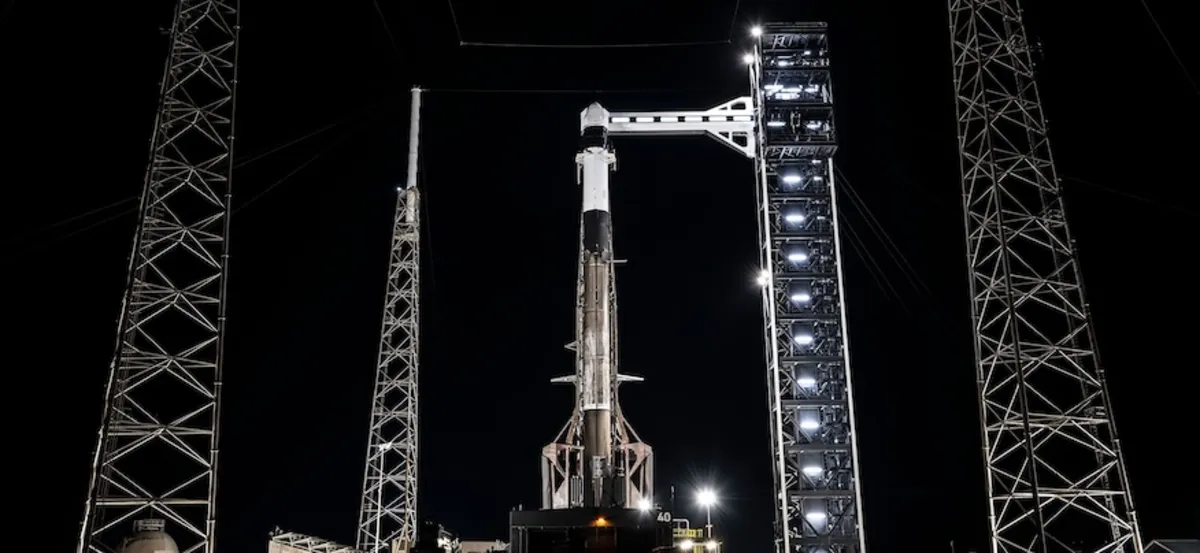
NASA and SpaceX are gearing up for a remarkable cargo resupply mission to the International Space Station (ISS). The mission, designated as CRS-33, is set to launch in the early hours of Sunday, August 24, at 2:45 a.m. EDT (0645 UTC). The Dragon spacecraft, which will be launched atop a Falcon 9 rocket from Space Launch Complex 40 at Cape Canaveral Space Force Station, features a groundbreaking new propulsion system located within its unpressurized trunk.
This innovative propulsion system will enable the Dragon spacecraft to perform orbit-boosting maneuvers for the ISS, assisting in maintaining its desired altitude. This operation is crucial as it alleviates some of the responsibilities traditionally handled by the Russian Progress vehicles and the station's thrusters. Bill Spetch, operations integration manager for NASA’s ISS Program, highlighted the significance of this upgrade during a prelaunch teleconference on Friday. “The hardware located inside the trunk of Dragon contains an independent propellant system, separate from the spacecraft, to fuel two Draco engines,” Spetch explained. “The boost kit will help sustain the orbiting lab’s altitude starting in September, with a series of burns planned periodically throughout Fall 2025.”
The 45th Weather Squadron has predicted a 70 percent chance of favorable weather for the instantaneous launch window, with concerns primarily related to cumulus clouds and lightning in the vicinity of the launch pad. Meteorologists have also indicated a moderate risk level for booster recovery weather. “A slight risk of isolated offshore thunderstorms will continue into the early morning hours,” the launch weather officers stated on Saturday.
For this mission, SpaceX will utilize its Falcon 9 first stage booster, tail number B1090, which will be making its seventh flight. Following liftoff, the booster is scheduled to target a landing on the SpaceX droneship, ‘A Shortfall of Gravitas,’ in the Atlantic Ocean. If successful, this will mark the 121st landing on this vessel and the 492nd overall booster landing in SpaceX’s history.
The Dragon capsule, serial number C211, is set to embark on its third mission, following previous launches during CRS-26 in November 2022 and CRS-29 in November 2023. It will carry over 5,000 pounds of science experiments and supplies to the ISS, marking SpaceX’s first long-duration CRS mission, where the spacecraft is scheduled to remain docked for approximately five months.
The newly integrated boost capability in the Dragon spacecraft is a significant advancement. This feature, which has been under development for some time, was successfully demonstrated during the CRS-31 mission on November 8, 2024. SpaceX’s director of Dragon Mission Management, Sarah Walker, noted that the Draco thrusters on the capsule were not optimally positioned for performing a boost maneuver. To address this, SpaceX designed a new boost kit that resides in the unpressurized trunk of the Dragon spacecraft.
Walker further explained that the cargo rack assembly now includes six propellant tanks, one pressurant tank, and two Draco engines, along with a new heater and insulation system. “We specifically added six propellant tanks, one pressurant tank, two Draco engines, and a new heater and insulation system to address the thermal considerations when these engines are firing for prolonged periods of time,” she said. This enhancement is expected to provide Dragon with approximately 1.5 times the reboost capability of a Russian Progress spacecraft.
Onboard the Dragon spacecraft will be a total of 5,070 pounds (2,300 kg) of cargo, with the majority being crew supplies, such as food and clothing. Among the cargo are 129 standard bags of food, including 33 crew-specific bags, 18 bags for coffee and tea, and 14 dedicated bags for tortillas. Spetch remarked, “This is the first time that tortillas now have their very own bulk overwrap bags, carrying a total of over 1,500 tortillas to fuel future crew meals in orbit.”
In addition to crew supplies, the mission will also deliver 985 pounds (447 kg) of scientific investigation materials. Notable experiments include a European Space Agency (ESA) metal 3D printing experiment, a biotechnology study focusing on lab-grown liver tissues, and a 3D-printed medical implant experiment designed to facilitate drug delivery or treat health conditions such as nerve injuries. “The SpaceX 33 Cargo Dragon spacecraft specifically will be carrying the hardware and samples to support around 50 different scientific studies and research facilities,” said Heidi Parris, associate program scientist for NASA’s ISS Program Research Office.